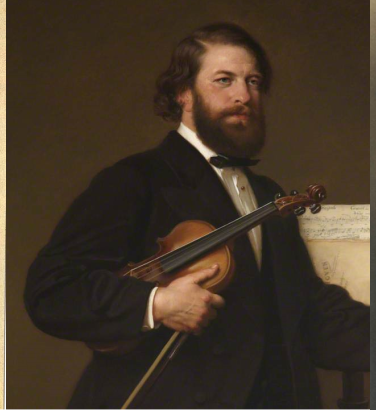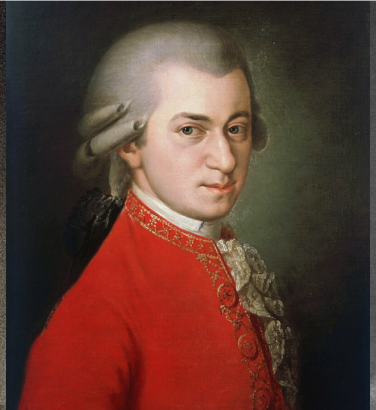
The SCO Chorus on music for Lent
10 Mar 2025
News Story
Ask any member of a church choir about their favourite time of year musically and many will answer Lent. True, Christmas is a lot of fun, but the forty days leading up to Easter contain a much greater variety of music to sing: from Ash Wednesday to Good Friday, the mood of the music they sing appears to get progressively gloomier, but there are some flashes of light to be found. The most significant respite comes on Palm Sunday, commemorating Christ’s triumphant entry into Jerusalem, after which Holy Week – from the Last Supper to Christ’s arrest and trial, culminating in the crucifixion – adds a sense of grim drama as events draw inexorably to their conclusion.
Whether considering the abstract themes of early Lent or the narrative of Christ’s final days, the highs and lows of the season make it a gift for composers of choral music, all with their own response to the texts they set. Some truly lean into the drama inherent in the lead-up to the crucifixion, but there are also countless instances of music to console, whether in general terms or something specific to those hit by an overwhelming sense of loss. It is a truly vast repertoire, and who better to guide us through it than the SCO Chorus, who perform MacMillan’s Seven Last Words on 12 April?
Let us start with the titans of the Lent repertoire, Bach’s settings of the Passion texts. He wrote three of these, based around the retellings found in the gospels of St Matthew, St John and St Mark – the last of these existing only in reconstructions, as the original has been lost. The St Matthew is the more substantial of the surviving two, but for one of the SCO Chorus basses, it is trumped by the St John, to some extent because he sang it as one of his first concerts as a Chorus member, in which “Mark Padmore [as the Evangelist] was superb”.
There are, of course, other standard texts for Lent. One of the most poignant is the Stabat Mater, a medieval hymn depicting the Virgin Mary mourning the loss of her son at the foot of the cross. It has been set by a wealth of composers – Pergolesi and Dvořák having penned two of the best-known – but for another SCO bass, the true standout is by Poulenc. As much as this singer relishes the separate baritone and bass lines, it’s the composer’s “orchestral finesse and colour, and some brilliant, dark-hued choral writing” that prove really effective for him, capturing “moments of chilling despair, in music that is truly spine-tingling”.
Many church choirs mark the beginning of Lent (on Ash Wednesday) with a performance of Allegri’s Miserere, a setting of Psalm 51 that was originally exclusively to be sung in the Sistine Chapel. Few later versions of this text have been able to compete with the ubiquity of Allegri’s, but MacMillan’s take cannily references it structurally, as recognised by one of the Chorus altos. Adding “his own flourishes and typically vivid word painting”, she deems it perhaps “less hypnotic” than the Allegri, but particularly enjoys the Scottish composer’s use of “a very simple but lovely folky fragment” as a repeated motif. Initially in a minor key, its return at the very end in a major key provides some deeply moving “consoling warmth”. One of her fellow altos, who first heard the piece only very recently, shares this admiration for the work: “it just blew me away!”
The psalms are of course not the only part of the Bible to provide some wonderfully evocative texts for this time of year. The book of Lamentations is also the source of many memorable turns of phrase, among them "they hiss and wag their head at the daughter of Jerusalem”, a favourite of one Chorus member in Bairstow's Lamentations, one he has sung since the age of 7. The music is punctuated by loud declamations of 'Jerusalem, return unto the Lord Thy God', but the work’s crowning glory comes when the composer delicately shifts the music into the major key, “as if to suggest a period of reflection, before ending on a very quiet refrain of the earlier Jerusalem section”.
The 2nd alto has two A flats in successive bars that I look forward to ALL YEAR.
Although Lenten music is often imagined to be full drama, there is something very special about these introspective moments. The “limpid simplicity” one singer identifies in Victoria’s Vere languores nostros is a typical example of this, a piece in which the composer explores “a daring stillness of sound, void of emotion” that is overpowering precisely because of the music's limited sonic palette. The same is true of Fürchte dich nicht, a gentle motet by JS Bach’s cousin Johann Christoph whose mood is aptly summed up by its opening words, which translate as ‘be not afraid’: as one singer puts it, it is “achingly beautiful, filled with love and tenderness”.
There is a similar quality to be found in another, much earlier setting of the Lamentations, by Tallis: one of our altos is very taken with its “long, sonorous, achingly lovely interweaving lines, suffused with […] exquisite melancholy”. This can result in some harmonic near misses as two lines almost collide, and the resulting clashes – a key feature in music of this period – are something choral singers particularly enjoy. They can send tingles down the spine for performers and audiences or congregations alike, much like the “painfully dissonant choral passages” in Sanders’ The Reproaches. Similarly to Allegri’s Miserere, this juxtaposes passages for full choir with plainchant, with the former providing (to the mind of one of our basses) “the emotional weight of the piece,” though he is aware that, “with almost a full 9-minute run time, it can almost be a little bit too much!”
In the words of another Chorus member, however, the opportunity “to wallow in some truly, heartrendingly miserable music” is one of the (admittedly questionable) joys of Lent. The Biblical King David’s grief over the death of his son Absalom, for instance, has unsurprisingly provoked some highly emotive responses from a variety of composers: Tomkins’ setting is possibly the most familiar, but one of our singers is especially taken by Eric Whitacre’s. As he puts it, it is “fantastically evocative and dramatic,” with “the repetition of so few words [making] the feelings all the more intense.”
Returning to the Tudor period, we also have a recommendation for Byrd’s Ne irascaris, which actually opens the Chorus’ Seven Last Words concert. Its final words – ‘desolata est’ or, in its English version, ‘desolate and void’ – become increasingly moving as they are passed around the voices, but in the words of one alto, they “took on a whole new meaning” in a virtual recording issued by the King’s Singers during the first Covid lockdown, when people across the world experienced a true sense of isolation.
When it comes down to it, however, what perhaps makes this misery all the more effective is the fact that, after forty days, the mood is cast off with the gloriously bright timbres of Easter music. However dark and depressing things may get during Holy Week, we – like the SCO Chorus – can rejoice and take comfort in knowing there is light at the end of the tunnel.

Seven Last Words
A choral contemplation of loss and rebirth from Scotland's greatest living composer, Sir James MacMillan, performed by the SCO Chorus.
Related Stories
![A violinist shown at three different ages: as a young man in a drawing, middle-aged in a painting and elderly in an old photo]()
Joseph Joachim and the great German violin concertos
7 April 2025
Beethoven, Mendelssohn, Bruch and Brahms: four violin concertos, all connected by a single violinist.![Three men, the first two in 18th century formal dress (one in black and white, one in a red coat), the last in an old photo, smoking]()
What is a sinfonia concertante?
17 March 2025
We delve into the history of a hybrid genre ...![]()
The bassoon concerto
3 March 2025
For the last article in our concerto series (for now), we turn to an instrument too often dismissed as the orchestra's resident joker.


